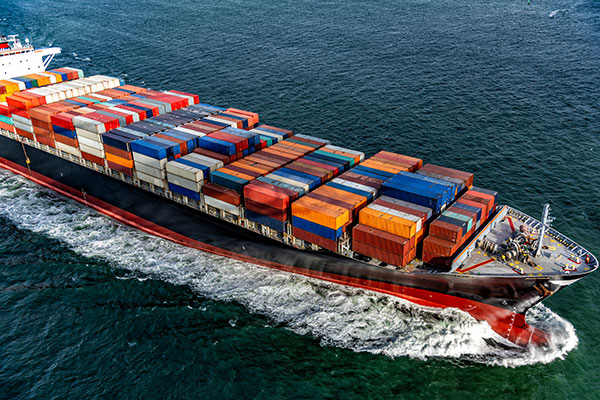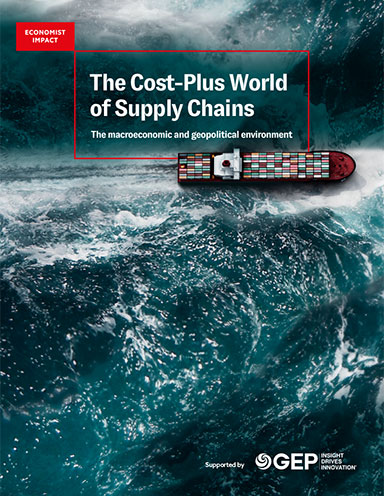How Procurment and Supply Chain Leaders Should Handle Supply Chain Disruptions
GEP outlines key steps organizations should take to keep supply chains resilient amid the growing instability on the Red Sea route.
Navigating the Red Sea Crisis
Increased attacks by Houthi rebels from Yemen on merchant vessels crossing the Red Sea are creating massive disruptions in global shipping and supply chains.
With trade volumes through the Suez Canal plummeting by over 40% and container ship transits down by 67% since the attacks began in November 2023, companies worldwide are facing delivery delays, cost spikes, and supply shortages, according to the United Nations Conference on Trade and Development (UNCTAD).
Procurement and supply chain leaders need to urgently adapt their strategies to minimize the fallout.
1. Diversify Shipping Routes and Carriers
With uncertainty around the reliability of the Suez Canal route, it’s prudent for shippers to diversify their transportation options.
Consider shifting some volume to alternative routes such as around the Cape of Good Hope or using rail and overland freight from Asia to Europe. The goal is to use multiple channels so that your supply chain isn’t dependent on any single corridor.
Diversifying carriers is also smart since the turmoil in the region may impact schedule reliability, service levels, and capacity of incumbent ocean liners. Vet new logistics partners thoroughly and negotiate flexible contracts to optimize shipping costs and options.
Shipping spot rates from Shanghai to Europe more than tripled (256%) and increased by 162% to the west coast of the United States, according to UNCTAD.
2. Renegotiate Supplier Contracts to Share Risk
The turbulence in the Red Sea will almost certainly increase procurement costs for many items. To keep budgets in check, buyers need to collaborate closely with suppliers and re-engineer contract terms. This includes agreeing on flexible pricing mechanisms to account for volatile freight rates and surging insurance premiums.
Building in buffers and collars around price swings based on market benchmarks can limit surprises. Supplier agreements also need to outline how risks and liabilities will be shared in case of catastrophic delays. The links in your supply ecosystem must share the burden.
3. Boost Inventory Buffers on Critical Items
Procurement teams should analyze spend data to pinpoint high-risk categories and SKUs that would severely disrupt operations if delayed. Earmark these products and create a few months of safety stock versus traditional levels. While higher inventory inflates warehousing costs, it also provides a buffer if there are prolonged logistics holdups.
The supply buffers should be distributed across a network of distribution centers rather than centralized in one warehouse. This way, regional plants have the parts needed if a shipment goes off course.
4. Stay Laser-Focused on Emerging Risks
With conditions changing rapidly around Red Sea stability, procurement groups must vigilantly monitor news that could impact supply chains. This includes tracking port congestion, container availability, ship schedules, and more. Average container spot freight rates saw the highest weekly increase, surging by $500 during the last week of December, according to UNCTAD data.
It’s advisable to do scenario planning and estimate potential impacts at different risk levels. Analytics tools can forecast delays and inventory requirements as situations shift. The goal is building resilience through visibility and not getting caught off guard if trade lanes tighten abruptly.
5. Leverage AI-Powered Solutions
Technology is imperative for navigating unpredictable disruptions like we’re seeing currently along the Red Sea route. Leverage solutions for end-to-end visibility across your supply network. Use collaborative messaging platforms and control towers to see delays in real-time and respond decisively.
Enable your supply chain to become dynamic and intelligent using AI, ML, and advanced analytics. It will allow you to continuously adapt to abrupt changes in demand, supply, transportation costs, and other factors. Technology creates the resilience needed to minimize turbulence.
Conclusion
While the Red Sea crisis has sent shockwaves through global supply chains, it also presents an opportunity to reinvent your strategies and partnerships and gain a competitive advantage. Companies that take proactive steps today to build flexibility and transparency across their procurement and fulfillment networks will be better able to manage uncertainty and mitigate interruptions.
Article Topics
GEP News & Resources
GEP Procurement & Supply Chain Tech Trends Report 2024 How Procurment and Supply Chain Leaders Should Handle Supply Chain Disruptions Optimizing Business Outcomes by Investing in Sustainable Supply Chains and Procurement Optimizing Direct Material Sourcing with a Unified, Extensible Source-to-Pay Platform Generative AI in Procurement Navigating the Cost-Plus World of Supply Chains How to Avoid the Pittfalls of Contract Management in Telecom and High-Tech More GEPLatest in Supply Chain
Ranking the World’s 10 Biggest Supply Chains The Top 10 Risks Facing Supply Chain Professionals Walmart’s Latest Service: Ultra Late-Night Delivery Dollar Tree’s Oklahoma Distribution Center Decimated by Tornado The Era of Self-Driving Tractor-Trailers Set to Begin Is the Trailers as a Service (TaaS) Model Right For Your Business? Why Grocery Shoppers are Leaving Stores to Buy Their Food Online More Supply Chain














